A lawn has many parts, and the lawn edge is one of its most noticeable features. Overgrown lawn edges can be ugly and make an otherwise healthy and well-kept lawn appear messy. And you are not the only one who struggles to keep their lawn edges tidy!In this article, let’s talk about how to cut lawn edges.
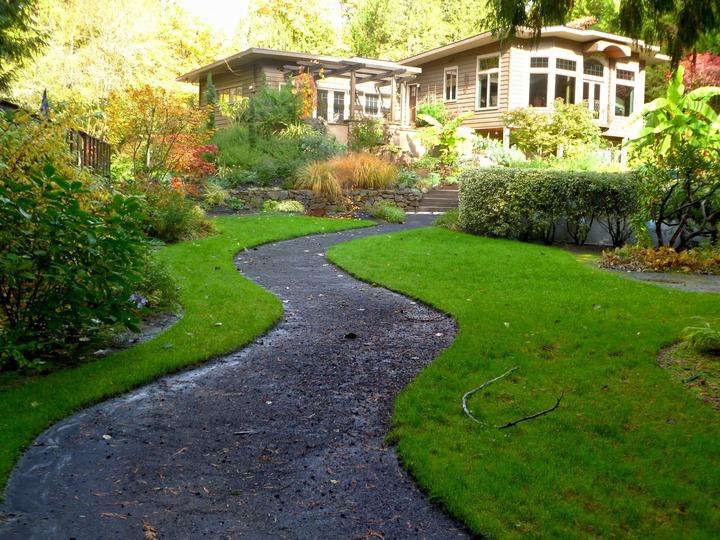
Giving your grass a nice, clear edge will significantly improve its appearance and tidy it up.
Lawn edging is a simple yet often overlooked task. However, this issue can be resolved in a few minutes with the proper grass trimmer and simple tricks.
Untidy lawn edges are easy to fix. Simply cut away any overgrown grass encroaching on the borders using a pair of lawn-edging shears. Ideally, you should do this after each mowing.
However, if this seems like a lot of work, you can find powered line trimmers with heads that can turn 90 degrees and be used to edge a lawn.
But wait! Before you fire up your trimmer, there are a few things to consider, such as the type of grass trimmer you will need and the types of edges (open and closed) in your yard.
What Is The Best Lawn Edger?
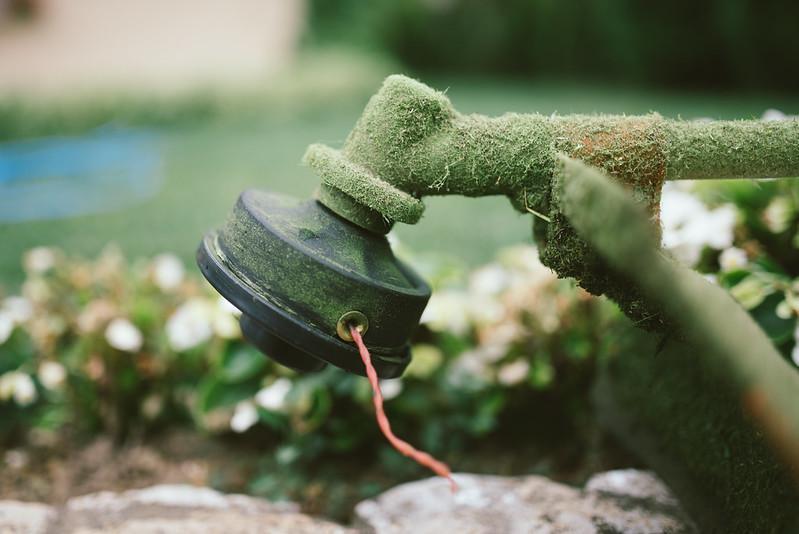
The lawn edger trimmer provides your yard with a clean, trimmed appearance while enhancing curb appeal.
A well-manicured lawn begins with a well-maintained routine, which is completed with a sharp, crisp edge. When deciding which grass edger to buy, several important considerations and available choices need to be taken into account.
For instance, three primary categories of grass trimmers are available, which can be distinguished by the type of power source they use. Each class has its own set of advantages and disadvantages. These categories are:
- Cordless (Battery-Powered)
- Electric
- And Gas.
Battery-Powered Edgers
When shopping for a battery-powered, cordless lawn trimmer, it is essential to evaluate how long the battery lasts on a single charge to ensure it has sufficient power to trim your yard in a single session.
The best batteries are lithium-ion since they maintain their power all the way up until the point where they need to be recharged.
Electric Edgers
The electric lawn trimmer is the most widely owned trimmer type in the United States, and it can run off of the mains found in your home.
Electric trimmers are often lighter and efficient enough for gardens ranging in size from small to large.
Gas-Powered Edgers
Gasoline lawn trimmers typically have greater power, making them ideal for use in larger gardens and grass denser and thicker.
However, compared to traditional electric grass trimmers, they produce more noise and call for more frequent maintenance.
Related: Lawn Mowing Pattern & Techniques | Cut Your Grass Like A Pro
Things To Consider When Buying A Lawn Edger
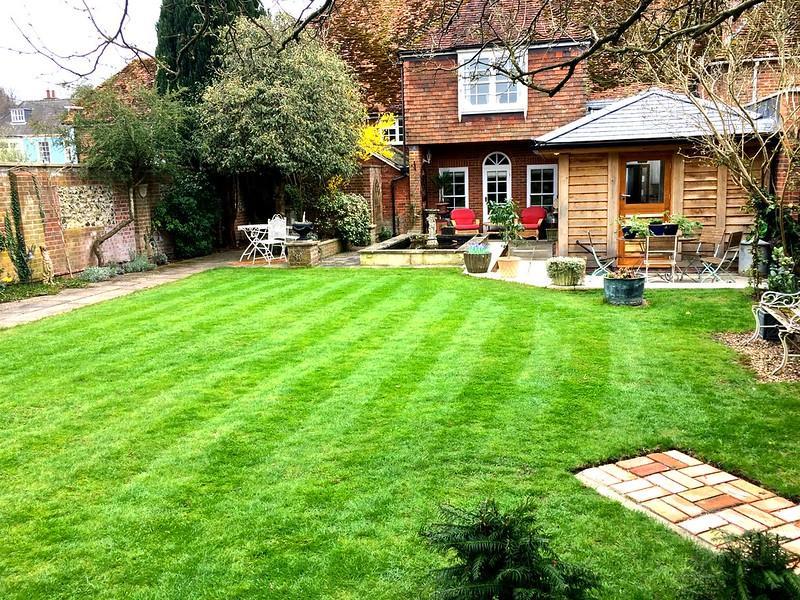
If you have an extensive lawn, you should buy a gas-powered edger for the job.
There are also a few other factors to consider when buying a lawn edger, in addition to its power source. Some of these factors are described below.
Lawn Size
If you have a large lawn or just want to get the work done more quickly, you should look into purchasing an electric edger or a gas-powered trimmer that has an edging function.
On the other hand, a set of edging shears with long handles is the most straightforward option for trimming the edges on smaller lawns.
Dual Function Lawn Trimmers
Grass trimmers that include an edging option are like getting two tools in one, but you should make sure that switching between the two functions is not difficult.
Some of them also feature a wheel that you could use to assist you in getting a nice and crisp edge.
Use & Maintenance
Carbon steel blades are durable and can have a fine clipped edge if they are sharpened on a regular basis. However, they should be coated to prevent rusting.
Telescoping handles allow you to adjust the length to a comfortable position, allowing you to perform the task while standing in an upright position and relieving strain on your back.
How To Cut Lawn Edges?

Long-handled grass shears work well for trimming a lawn where it is flush with a path.
If you want to learn how to trim the edges of your lawn efficiently and effectively, here are some of my top recommendations.
However, before starting, ensure that you have all the things listed below available to you so that you do not get into any trouble later on.
Things You Will Need
- Edging shears
- Half-moon edger
- Long-handled grass shears
- Plank of wood or long rope
Step 1: Mow The Lawn
You must first mow your grass and then edge it if you want a crisp edge. Mowing first exposes the natural shape, which makes it easier to follow the edge when cutting.
Related: What Is The Best Mowing Season, Height & Frequency For Bermuda Grass?
Step 2: Recut The Edges
During the spring, use a half-moon edging tool to recut the edges of your lawn. If you want a straight edge, cut against a plank of wood, and if you wish to have a curved edge, cut along a rope stretched along the edge of the lawn. Or, you can follow the lawn’s natural curve.
Step 3: Trim The Edges
Next, use edging shears with long handles to trim the edges of the lawn, cutting the grass in areas the trimmer couldn’t reach. Next, remove the clippings and put them in a compost pile if you want your final result to look completely professional.
Step 4: Remove The Overgrown Turf
To remove chunks of turf from paths that have been invaded by grass, cut the turf with a sharp knife and then take the pieces away.
Tips For Edging A Lawn

Avoid damaging the flower beds when edging your lawn as much as possible.
Now that you know how you can edge your lawn and what kind of tools you will need to get the job done, here are a few tips to make your work more simple and straightforward.
Consider Inorganic Edging
You might think about investing in plastic, wood, or metal edging if you want to spend less time edging around borders and garden beds.
Inorganic edging is ideal for walks and flower beds. Additionally, it can prevent your grass rhizomes from encroaching on flowerbeds.
Don’t Kill The Perennials
To cut around flower beds and valuable plants, use a manual edger. You can go wild once you’re adept with your edger or string trimmer.
Too many times, I have unintentionally destroyed my mother’s beloved flowers. If at all possible, you should not do that.
Pay Attention To Your Trimmer
Use a string trimmer or weed wacker if you need to cut the grass in a tight spot. Take note of the direction in which the blade or the string of your trimmer spins.
If the trimmer rotates clockwise, you should travel from right to left. Trimmings should land on the lawn, not the sidewalk, street, or garden beds.
Work Slowly & Steadily
When you edge your property for the first few times, you should focus on completing the job well rather than doing it quickly. This is not a race.
This means you should never rush through a trimming job. You’ll build a speedier system for edging as you gain experience.
Trim By Standing On Walkways
When trimming the edges, use the pedestrian trails or the driveway to stand on. With a flat surface to walk on, you can effortlessly edge along the perimeter of your lawn.
Don’t Edge The Hardscape
Keep your distance from the pavement, pedestrian areas, and sidewalks when using a power edger. Follow a specified path and trim between the lawn and the hard surface.
This will prevent your hardscape’s edges from being constantly damaged and will extend the life of your edging trimmer as well.
Related: Grass Types That Do Not Require Mowing & Best No-Mow Grass Alternatives
Edging The Lawn | Closed Vs. Open Edges
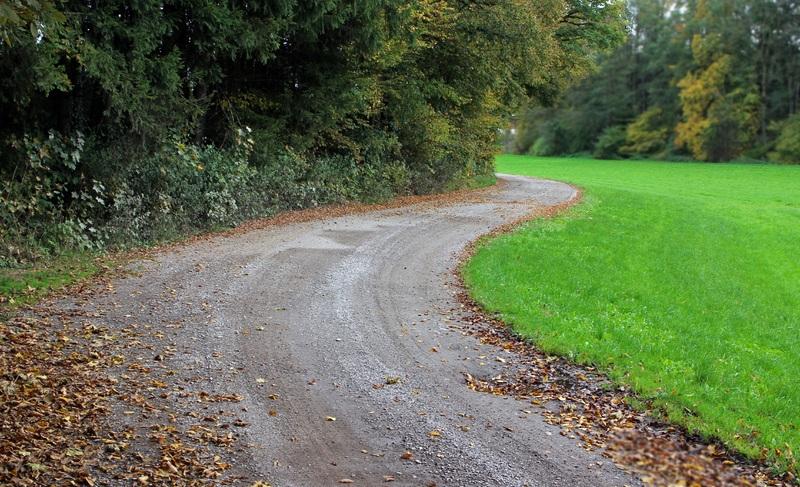
Do not stand on the grass when trimming open edges on your lawn.
There are two types of edges in yards, lawns, and gardens: open and closed. The closed edge is the boundary between the grass and an adjacent surface, such as a driveway or patio.
Open edges are those that are exposed on one side, such as those that run along the borders. Each of them requires a slightly different care approach than the other.
Trimming Closed Edges
- If the grass is slightly taller than the other surface, mow by concentrating the mower on the ‘other’ surface. You might also need to increase the height at which you mow the lawn in order to prevent it from becoming scalped.
- If the lawn is only slightly lower, mow it so that the mower spends most of its time on the grass. Also, to protect the blade from damage by the hard surface, you might need to raise the height at which you mow.
- If there is a significant difference between the levels (more than 3 to 5 centimeters), you should shear as you would for open edges (discussed below)
- If both the grass and the surface that adjoins it are level, you shouldn’t have any trouble mowing over the edge of the lawn.
Trimming Open Edges
- Edges should be angled between 20 and 40 degrees. In other words, the cut should slope outwards (towards the border) from top to bottom. This prevents grass roots from drying and leaving brown margins on a green lawn.
- You can fix the edges with a half-moon edging tool if the edges have obvious flaws.
- Edgers, shears, or electric string trimmers can be used every two to three times through the cutting process to tidy up the edges.
- When mowing or gardening, avoid standing on the edges.
How To Fix Broken Lawn Edges?
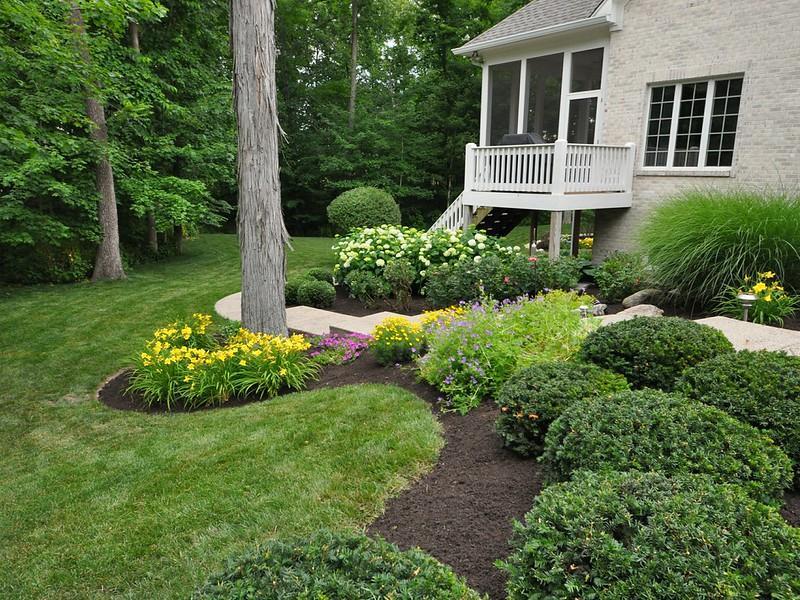
If your lawn has broken edges, cut away the damaged area and re-turf or reseed
Broken edges not only give the grass and garden an untidy appearance but also make it much more difficult to mow the lawn and edge the garden. However, some quick fixes can improve your lawn’s beauty and make mowing easier.
For instance, you can cut out a square area of the turf that contains the broken edge with a sharp spade or a lawn edging tool shaped like a half moon.
Remove the turf by cutting it, then flip it over 180 degrees so that the straight edge lines up with the edge of the lawn, and the jagged edge is now inside the yard.
Fill the broken area with soil or compost, level it, and reseed it with grass.
How To Fix Uneven Lawn Edges?
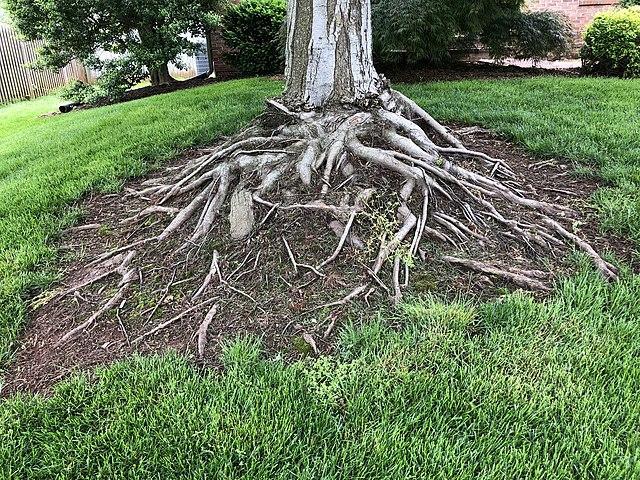
Uneven edges are a common problem in sandy soils prone to erosion.
If the lawn’s edges are uneven, you can recut them into the desired form using a sharp spade or a half-moon edging tool.
Make sure your cuts are good and straight by using a short piece of wood or something similar as a cutting guide.
However, if you want perfectly wavy edges, you should use a garden hose because it can map out your curves and work as a cutting guide.
For a flawless lawn, you should recut the edges once a year. This is especially true if the soil beneath your grass is light and sandy, as it is prone to erosion.
Get Creative With Your Lawn Edging
In addition to maintaining the edges of the lawn in good condition, a few things can be done to turn those edges into pretty lawn features.
Check out these suggestions to get some ideas.
- Why not make a funky lawn edge with LED lighting?
- The use of wooden lawn edging gives the lawn a more natural look.
- Stones also make lovely, easy-to-maintain grass edging.
- Plastic lawn edging can also be used to create neat and tidy borders.
- And if you’re really strapped for cash, a brick edge will do the trick too!
Frequently Asked Questions
How do you cut your lawn edges by hand?
If you want to trim your lawn’s edges by hand, you can use a manual edger. A manual edger is like a shovel.
With your feet, drive it directly down into the ground until the lip at the bottom hits the ground. However, ensure that it is straight, making the edge more crisp.
What tool do you use for edging your lawn?
The grass on the very edge of a lawn or flowerbed can be trimmed with a lawn edger since the lawnmower might not be able to get there.
For example, a half-moon lawn edger, sometimes referred to as a step edger, is the best manual tool for cutting precise lines in turf.
How deep should you edge your lawn?
When you are edging your lawn, you should only cut around two inches deep, and you should also watch out for underground cables and pipelines.
Remove the cutaway piece of turf and smooth up the edges of the mini-trench you’ve made, so they’re sharp and clean, with a beveled contour.
Can you use a line trimmer for edging?
The line trimmer isn’t designed for edging lawns, although it can help if you don’t have a lawn edger.
Moreover, it takes some skill, and the result will never quite match the precision that can be achieved with a tool that is specifically designed for cutting edges.
Sources for Further Reading
Edging and Mulching Landscape Beds. (2018). Retrieved 3 September 2022, from https://extension.illinois.edu/blogs/over-garden-fence/2018-05-21-edging-and-mulching-landscape-beds
Garden Edging – Florida-Friendly Landscaping™ Program – University of Florida, Institute of Food and Agricultural Sciences – UF/IFAS. Retrieved 3 September 2022, from https://ffl.ifas.ufl.edu/resources/ffl-minute-radio/2022-archive/june-2022/garden-edging/
Edging makes landscape beds easy to keep | Mississippi State University Extension Service. (2022). Retrieved 3 September 2022, from http://extension.msstate.edu/news/southern-gardening/2011/edging-makes-landscape-beds-pretty-easy-keep
Editor’s Recommendations
Lawn Tractor Vs. Zero-Turn | Which Is Best & Which Should You Choose?
Solved! How Long Do Fertilizers Take To Work? | Liquid Vs. Granular Fertilizer







